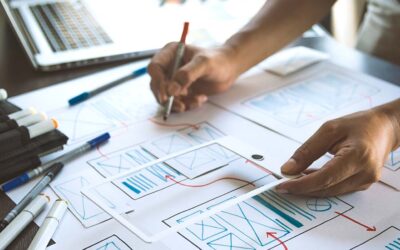Museum TrendsWatch: Emergency Response in the Face of Disaster

Rachael Cristine Woody
This week continues our review of Center for the Future of Museums’ TrendsWatch report and its five pillars. This week’s pillar is Emergency Response in the Face of Disaster.
The Center for the Future of Museums (CFM) is under the auspices of American Alliance of Museums and offers a trends forecast that typically covers five topics, sometimes all related, sometimes not. This year the unifying theme is Museums as Community Infrastructure.
What is a “Disaster”?
“Disasters” are defined by CFM as: severe storms, cold and heat emergencies, power outages, civil unrest, and resulting supply chain disruptions. It does not include pandemics, nor economic disasters that can be precipitated by an event or by corrupt or insufficient economic practices. Given the economic devastation brought on by the 2008 Great Recession and the COVID-19 pandemic, this trend could benefit from including these museum-closing events regardless of whether they’re stand alone or a knock-on effect from a separate emergency-qualifying event. Overall, this section appears to heavily focus on climate change inducing disasters. CFM Founding Director Elizabeth Merritt states: “Many of these risks are driven by climate change, and museums can use their nonpartisan credibility and their communications skills to build consensus on climate policy.”
Read More About Economic Disaster and Museums
I’ve written about economic disasters and how museums should prepare for them a few times over the last couple of years, via Lucidea’s Think Clearly Blog: Economic Disaster Planning for Museums (June 2020), How the National WWI Museum and Memorial Kept Its Employees (September 2020), and LAMs are More Alike Than Different: Disaster Preparedness (January 2021).
Museums and Their Established Trustworthiness
TrendsWatch first covered how the public perceives the trustworthiness of museums in 2019. For a recap of this topic please see my take on this trend via Lucidea’s Think Clearly Blog: Museum TrendsWatch 2019: Truth, Trust, and Fake News. Merritt raises the believed trustworthiness of museums to a role that museums should actively step further into—specifically by supporting education on climate change, why it’s happening, what it means for us, and what we can do about it.
What Museums Can Do
In addition to education (through trust), Merritt encourages museums to also become a place of sanctuary for the community during an emergency, and to connect with the local response network. The core actions from this section are:
- Prepare for an era of rising risk.
- Extend physical protection to the community with use of the museum facilities during emergencies.
- Combat climate change by helping communities understand the changing landscape of risk with museum education techniques.
- Get to know the local response network (e.g., firefighters) and integrate (as appropriate) to help with their response to your museum in the case of an emergency, and to learn how the museum can help with the overall community response during an emergency.
A Framework for Action
Each TrendsWatch section includes an “Action” area. The following is a summary of those actions for this section:
Inward Action
- Familiarize staff with local climate risk assessment. If there isn’t one, advocate for the local government to commission one.
- Foster risk management and disaster response relationships for more effective communication and working relationship during a crisis.
- Incorporate climate-supporting design elements into the museum’s maintenance or renovation plans.
- Create policies and procedures for deploying staff in larger relief and response efforts in the community.
Outward Action
- Offer the museum (and its resources) to be incorporated into government or agency response plans.
- Invest research into assessing the community’s biggest risk and how the museum can help with mitigation and relief.
- Create and disseminate materials that raise awareness of the risks, and offers education on how to prepare for disasters.
- Help bring risk scenarios to life through exhibit style creation of panels, displays, media models, etc.
As Merritt suggests: “One of the most powerful things museums can do to help society tackle systems-level change is to foster public understanding about climate science and risk.”
Challenges to Be Addressed
If the museum hasn’t already invested in content creation for climate education nor infrastructure and environmental reinforcement, then the museum is facing activities that will take resources—some significant ones. Additionally, museum staff will likely need their own education on the climate issue before they can engage in creating policies, content, and other activities. This trend and its recommendations will take longer to prepare for, but is one that all of us should begin the work for right now.
Conclusion
For more information on what peer museums have done in this area, and for more in-depth analysis on this topic, please view the original report available via the CFM TrendsWatch website. Next week we move on to the next and final pillar of community infrastructure: Right-Sizing the World.

Rachael Cristine Woody
Rachael Cristine Woody advises on museum strategies, digital museums, collections management, and grant writing for a wide variety of clients. In addition to several titles published by Lucidea Press, she is a regular contributor to the Think Clearly blog and an always popular presenter. And remember to check out Lucidea’s Argus solution for powerful and innovative museum collections management.
Never miss another post. Subscribe today!
Similar Posts
No-Code Digital Storytelling Example: Rembrandt’s Self-Portrait at Kenwood House
Explore how English Heritage’s Kenwood House uses the no-code platform Shorthand to bring Rembrandt’s Self-Portrait with Two Circles to life through visual storytelling and interactive design.
Exploring No-Code Digital Storytelling: Hoover’s “Fanning the Flames” Exhibit
Explore no-code digital storytelling with Hoover’s ‘Fanning the Flames’ exhibit. See how interactive tools (Deep Zoom Color Compare & Hot Spot) enhance user engagement and the visual experience.
An Introduction to Scrollytelling for Museums
Discover how museums use scrollytelling and digital storytelling platforms to create immersive narratives. This introduction explores key concepts and approaches to interactive storytelling.
Exploring Self-Determinate Multiple Pathways: An Example of Digital Storytelling
Discover how self-determinate multiple pathways offer flexible interactive storytelling in museum exhibits. Learn from the Tenement Museum’s ‘Your Story Our Story.’






Leave a Comment
Comments are reviewed and must adhere to our comments policy.
0 Comments